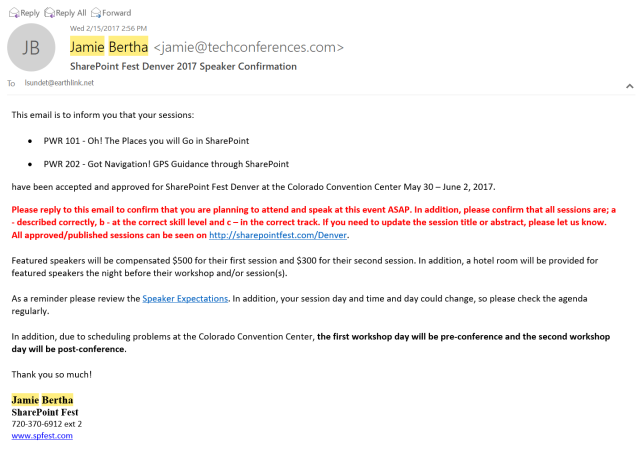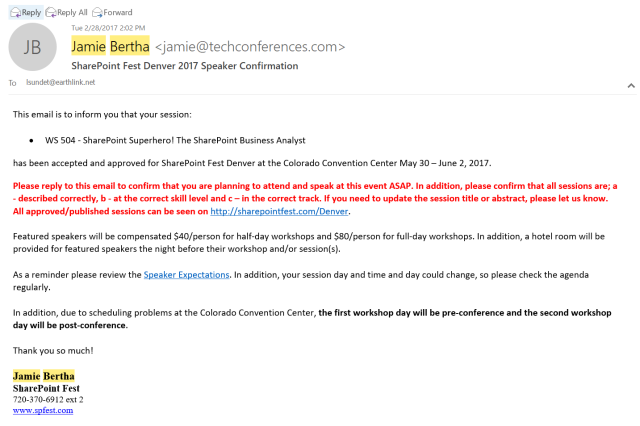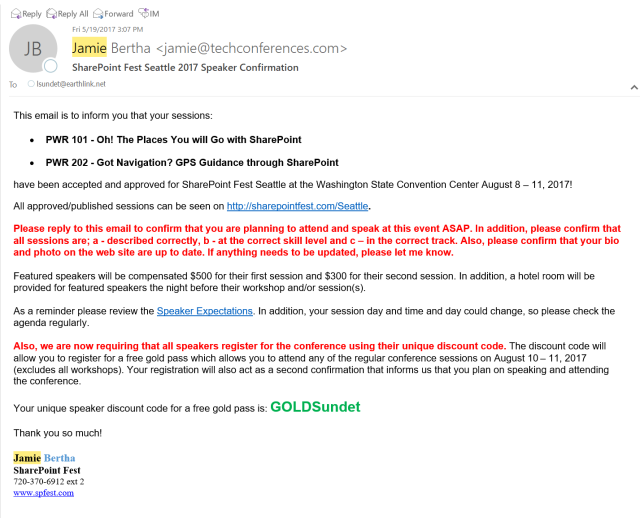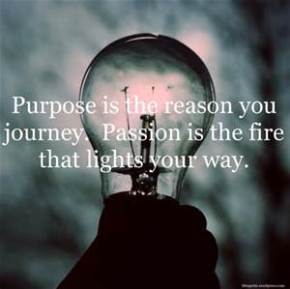

The RACI matrix
In terms of project management tools, one I have found to be consistently painful and least valuable is the RACI matrix, yet companies are still using this as a means to clarifying roles of a team.
I have found, more often than not, the RACI matrix is simply just a tool to establish good representation of what roles people will serve and in theory a tool for accountability. However, I have never in my 15+ years of doing projects, see this work efficiently. It’s more of a tool that is filled out during strategic planning sessions, then put away as if some “deliverable” was met and checked off a list. Accountability allowed to winnow away as soon as that deliverable is met.
However, in my learning of more agile methodologies, I have come to find that the RACI matrix is no longer a tool of use, this is because EVERYONE on the team is held Responsible, Accountable, Consulted and Informed. In reality, a diagram is no longer needed as anyone on the team hopefully could give some level of information when a question is asked. Yes, it takes good teamwork to get to this level, but the RACI matrix provides little if no value to a team working this way.
So, why is the same theory not applied to a traditional project management team. Shouldn’t we all be held to some level of accountability? If the answer is yes, then all the A’s would be filled in on the matrix, which is typically not the case in a RACI matrix. What about the R or Responsible? Those are the people doing the work right? Yet, don’t we have assigned tasks as part of a project management plan to a much more granular level doing this already? What if that responsibility shifts from one task to another, is that person still responsible or just informed at that point. Is the RACI matrix updated? Not in my experience and yet in the realities of the project team, it has.
The RACI matrix is I’m sure loved by many, but unless this is a living, breathing document that is done throughout a project, what value does it provide? Are we better off as a project team to adopt a more responsive and agile team by replacing the RACI matrix with some techniques like a stand up meeting to allow a sense of “esprit de corps” and group thinking? We may get better results if the team is held to a level of accountability that the RACI matrix simply can’t provide. My belief is that the RACI matrix needs to be retired and new ways adopted to form a good solid team. There are lots of new tools and techniques out there to adopt rather than the stagnant use of an old, outdated and ineffective tool such as the RACI matrix.
What do you think? Does the RACI matrix provide real value to your project or just some deliverable to check off a list?
Sweet water and light laughter until the next…
<Liz>
Work Like a Network
I first heard the “work like a network” phrase at the SharePoint/O365/Yammer conference in March of this year. It’s interesting to learn that Cisco Live 2014 repeated a similar theme at their conference recently. I wanted to share an experience I had where I actually did “work like a network” recently that is truly inspirational.
Sure, we can use a lot of social items in our work environments and it helps to break down barriers. However, you’re still in that same culture of your work environment, you’re comfortable, you may already know most people on your network and you have similar ideas and similar ways to approach things.
Now imagine if you will, all those are broken down as well. You’re in a brand new environment, with new people around you. A totally different culture if you will and a new framework on how you approach work. You’re with different people from different companies working “like a network” and helping each other out. Think of your first day at a new job. This is what is behind the mindset of #_Unbound.
I recently attended an #_Unbound in Minneapolis that was hosted at Cargill. I heard about this group shortly after the SharePoint conference thru LinkedIn and thought it was a fantastic idea. Basic premise is that people from different companies get together at one of the companies that is willing to host. We talked about things in our business that were problem areas. Learning from each other how different companies approached things in their work environment. How they created social strategies at their companies and some very common things that happened at more than one company and how to get past those hurdles.
It was also great because we as participants were able to work on our own work while making a social connection to other people in other companies. We were able to sit in on the customer engagement meeting held by Yammer employees. What a great concept that was, Yammer being open enough to share what challenges they have as a team and as a company but to be able to get ideas from a focus group that was already participating in the #_Unbound session.
There are these types of sessions all over the world right now. The people here in MN have met three times and are trying to get together over the summer as well. I know there are others in many cities across the country and if you can’t find one close to you, what’s stopping you from forming your own? You know people in other companies in your area right, take the opportunity to learn from the people in those companies and who knows where it will lead. Working like a network doesn’t mean only your own company. It’s what I like about the SharePoint community and Yammer communities already is the openness to share ideas and work thru challenges.
Sweet water and light laughter until the next.
<Liz>
Purpose with Passion
It seems as if I’m hearing or writing a lot about purpose lately. That little word has shown up quite a bit in different context over the last few days and in some ways inspired me to write more along with friends, co-workers and people on social networks asking about things that needed purpose defined. I found the quote in the above picture and really liked it as so often our passion for something deafens out purpose for doing what we are passionate about in the first place.
I realize that as mere humans, there are many things we do that don’t have purpose to them, or at least we can’t define that purpose. Often times we find ourselves thinking about the what we did later with regret saying “yeah, that was dumb”. That may be because we are caught up in the passion of it, but haven’t taken the time to really identify the purpose behind it.
Just today I offered up some advice on a social network to make sure they have a purpose that is communicated when trying to start a social strategy in their company. Without the purpose or definition of the business need, the project is more likely to fail. If for no other reason than users won’t adopt to something unless there is a need, either in the business or to them personally.
Take for instance people adopting to Twitter or Facebook before that or even texting before that. While I wanted to try it out, my husband saw absolutely no need to adopting any of these. Then he found out his kids would rather text than call him, so he had a need to learn to text for the purpose of contacting his kids. Facebook was the same way for him, even though he didn’t want to see all the pictures his kids posted, it was a way to connect with them as well as others he knew but hadn’t seen for a while. He’s still not on Twitter, but sees me on it all the time, so the interest may be there, just not the purpose yet.
It’s the same way for a social strategy in a company. It’s the “cool” thing to do and it’s a lot of fun and you may get some people to adopt to it, but without business purpose defined and communicated, there’s likely to not be a whole lot of adoption. At that point, it doesn’t matter how much you try to change the culture of your organization, the solution just isn’t going to “fit”.
So, as a Business Analyst, it’s even more important that we understand the purpose or the business need. It’s the answer to the question “Why” that we seek to understand so badly. If the answer can’t be generated by someone, no matter how passionate you may be about the work, seems like a waste of effort. Do you really want to take that slight chance that there may be some practical application to the work you put into something because you were asked or were passionate about it?
 What if someone asked you this question: What would it take to fill this room full of balloons? Would you start by estimating how many balloons you would need to purchase or asking clarifying questions like “do the balloons need to fill the room from floor to ceiling”? While this shows analytical thinking or even creative thinking, it doesn’t get to the bigger question of “what is the occasion for the room to be filled with balloons” or in a much harder way “why are we filling the room with balloons in the first place?” Because it’s fun or cool shouldn’t be the reason. It should be traced back to the business need.
What if someone asked you this question: What would it take to fill this room full of balloons? Would you start by estimating how many balloons you would need to purchase or asking clarifying questions like “do the balloons need to fill the room from floor to ceiling”? While this shows analytical thinking or even creative thinking, it doesn’t get to the bigger question of “what is the occasion for the room to be filled with balloons” or in a much harder way “why are we filling the room with balloons in the first place?” Because it’s fun or cool shouldn’t be the reason. It should be traced back to the business need.
Don’t get me wrong, being passionate about something is great, but to be even greater in our efforts, passion with a purpose gets more people on board and adopting to what you are passionate about, and that passion is contagious once people understand the purpose. So strive first to find purpose in the things you do at work and work with passion to light your way.
Sweet Water and Light Laughter Until the Next!
Special thanks to K!
The Soft Skills I Learned from my Dog
Dog’s are amazing creatures and in my humble opinion, I have the best dog ever! Despite his tendency to hog the bed and get nose prints on every glass surface from the floor to 3 feet high, he’s pretty amazing. Before life with a dog I was still working in Sales and a short time later I started working in the ERP world. Many lessons learned throughout my career, but many times I think of what my dog has taught me. Here’s a little recap:
1. Always happy to see people.
My dog has this disposition that he’s always happy to see humans. It doesn’t matter if it’s his human or other humans, he just loves to be around people. He greets you with a smile on his face and a wag of the tail. Humans have the choice to start each day in much the same way and should greet each other not based on what has happened previously in the day, but just greet each other for the sake of seeing other humans, having that interaction and be happy. This doesn’t always happen, but sometimes in business it’s just a good idea to put on a good front, smile and if nothing else, make someone else’s day a little brighter.
2. Live in the moment
Dog’s have a unique gift to always live in the moment. They don’t hold grudges, at least not for very long and they have the tendency to get over things quickly, unless of course a squirrel crosses in front of them. Humans however don’t forget quite as easily, so another lesson learned from (wo)man’s best friend is to simply live in the moment. Whatever is going on at the time, be present!
3. Did someone say WALK
Let’s face it, life can get tough sometimes. Stress levels can get very high and tensions between people can be even more stressful. If you’re still carrying the grudge from #2 and having a hard time getting over it, try going for a walk. It can clear your mind for a while and the added endorphins aren’t bad either. Dog’s love walks and if you can, try taking your dog for a walk and get back to living in the moment and greeting people with a smile sooner.
4. Set boundaries
Dog’s will amazingly tell each other what actions are good and which are unacceptable. Usually this comes in the form of a bite against the collar or ear and other dogs get the drift and eventually are trained to be part of the pack. They get on to playing around and having fun very soon after. In order to get people to follow in line with a project you’re involved in, take the time to let them know what’s acceptable and what is not. This is true especially if they are new to a project or company. Dog’s know boundaries in both the dog rules and human rules and they are much better behaved when they have boundaries. Projects should be no different, so set boundaries up front on what is and what isn’t acceptable.
5. Work for treats
Set goals for yourself and for your team. Reward appropriately and celebrate even the little successes. Positive reinforcement drives good behavior. I’ve never seen a dog pass up a treat or cookie when not doing some trick, but the reward is much sweeter when they do it automatically on the enticement of said treat. Often times projects get caught up in what’s next that needs to be done and don’t always celebrate the milestones that they work so hard to achieve.
6. Chase that bunny
My dog thinks he’s part greyhound sometimes and thinks he’s way faster than the bunnies that run in the neighborhood. Bottom line, he’s way to slow to catch even the slowest bunny, but that doesn’t stop him from trying. He does it for the thrill of the run and the hunt as well as to learn something new each time. Humans tend to forget what leads them to the chase in the beginning and forget the fun in learning something new. Granted the human chase is sometimes years, but what they need to remember is the thrill in the beginning and each and everyday learn something new from the experience. Set goals for your chase each day and a new strategy to try again and again. Who knows, maybe there will be one day the reward is the catch and not just the thrill of the chase.
Sweet water and light laughter until the next…
<Liz>
WHY?
There’s a saying in the business analyst community that goes something like: A business analyst has license to ask anyone in the company a question, as long as they know how to ask it. This is very true and something to consider before marching into the CEO’s office with a question that hasn’t been fully prepared.
Yet, as analyst, we seek to understand and that involves asking the question: Why?
Who knew one little word could be so powerful. I’ve seen grown men rendered speechless and strong women left shattered from this small little word. It’s just 3 letters, yet holds so much power. Most of the preverbal “four letter words” hold less power nowadays. What is it with this word that seems so harsh?
I remember asking this of a co-worker about a year ago and while she answered it very simple, it also lead me to ask another “why?”. No matter how many times I asked, I couldn’t seem to get to her purpose. I could see the transition in her demeanor: shoulders starting to stiffen, head starting to bow until finally she broke and said “I don’t know, why do you keep asking me” I learned the hard way… that was not the way to ask.
So, I’ve tried to soften the message. Somehow working in construction industry for so long has hardened me. It’s not in my nature to ask the question in a very soft way. Asking: “Could you tell me more about your motivation behind that statement” just really did not suit me and the people that knew me would give me a funny look. Yet, this may be completely appropriate way to ask “why” in a very soft way. For me, it felt weak and I got the question: “what are you really asking”? People who knew me couldn’t trust the way I was trying to ask the question because it was out of character for me.
So, what’s right? I don’t want the harsh way of asking why, yet that seems a little more me. Then there’s always those times when your in the heat of the conversation and the question “Why?” leaves your lips before you can even think to try to soften it. It comes off harsh, maybe a little demeaning and makes you look like a whole lot of bully and that’s not the intent.
I caught myself in that exact situation asking the Director of Sales “Why” a little too quick one day and could actually see his physical reaction to that question. I couldn’t take the word back, so I had to do something to qualify it and somehow soften it.
What worked for me was to say: “I’m asking “why” to understand more about the reasoning behind it and what we are trying to solve and not trying to question the decision that was made”. His reaction was astounding. It was like a light bulb went off and he physically relaxed. He understood not only how to better answer the question, but also understood where I was coming from in asking the question. Talk about building trust with that little qualification statement to a big question.
Yes, next time I’ll try offering the statement before the question to hopefully get an even better reaction and yet, I’m not compromising who I am or seeming to weak in my approach. My best advice, find what works for you and what works for the culture of your organization and when you can, prepare the question and how to ask it ahead of time. You may be asking yourself a whole lot of “why’s” if you don’t.
Sweet Water and Light Laughter Until the Next
<Liz>
Requirements or Rework
I recently attended the SPC14 conference in Las Vegas. Filled with bright lights of the big city and many brighter people at the conference. It was full of learning, getting to know others to work like a network and a little fun thrown in. Of course, nowadays, what you do in Vegas usually finds it’s way to being posted on social networks throughout the community and are spread quicker than wildfire so I just wanted to share my thoughts on the conference and make some things clear that I discovered during the event.
I was at the conference to learn more about creating a social strategy for my company and I completely immersed myself in doing as many real social things as well as the social things that are only done behind a computer. I learned a lot about Yammer as I worked with it the entire week and made quite a few connections. One of the things that really interested me, other than the social “research” I was conducting, was that of a requirements session that took place while I was at the conference.
I didn’t get to attend the session for a couple of reasons. #1. I should know about requirements, I’m a BA after all. #2. There were so many sessions that picking 2 or 3 in a time period was normal. Since I can’t be in 2 or 3 places at once, I had to pick one and hence, reminded of #1 reason for not going to the session. I have reviewed the deck that was delivered and even met the speaker. I thought it was a great presentation, but there seemed to be quite the discussion of a requirements template on Yammer after the session.
I’m not sure what was shown, but the Yammer community seemed to be looking for something that was all inclusive of the requirements. Collect requirements by documenting them on the template and doing a prioritization all at the same time. Really?? HMMM. I felt my BA skills suddenly taking over and creeping along my skin like a bad infestation of insects crawling around.
From my perspective, there’s a lot of steps you need to take when it comes to requirements. While some steps are taken in a more formal approach than others, the steps are still there and shouldn’t be glossed over. This is true for any requirements, whether working with SharePoint or some other software…you’re doing requirements or you’re doing rework.
Requirements need to be elicited and can be done in a number of ways or variety of techniques, but drawing out the requirements is the first step. Once that’s done, requirements go thru an analysis process, is it valid, is it duplicated, are there conflicts with two or more requirements and how are those requirements prioritized in terms of your solution. Finally requirements are traced back to the business. Why? Well, how do you know if a requirement can provide business value or not if you haven’t bridged the gap from business need to the requirement? Otherwise, your requirement may be to provide world peace. Maybe a great requirement, but does it add value to the business or conflict with other things?
So, there’s a little more to requirements than initially thought and a lot more than just putting requirements on a template that “does it all” at once. So, please be wary of getting templates that do just that and think you’re done. If nothing else, ask a business analyst that is trained or certified to help you with the requirements processes and you will find that there’s a lot more to it, but going thru the process will lead to more success in your projects as well.
Sweet water and light laughter until the next!




